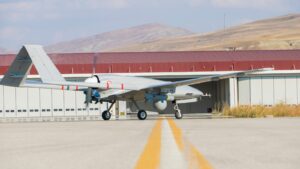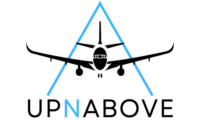Imagine soaring above the clouds without a pilot on board, reaching altitudes and distances beyond the ordinary. That’s the reality of Unmanned Aerial Vehicles (UAVs), a technology that’s revolutionizing the way we explore our skies. Among these, there’s one that stands out due to its sheer size – the largest UAV in the world.
Largest UAV in the World
Transitioning from the rich history and swift advancements in UAV technology, it’s time to focus on the titanic star of the UAV world. Standing tall as the world’s largest drone, this UAV showcases formidable physical attributes and advanced technological features.
Physical Characteristics of the Largest UAV
 The largest UAV in the world, the Northrop Grumman RQ-4 Global Hawk, sports an incredible wingspan of 39.9 meters, equivalent to that of a Boeing 737. It displays a body length of 14.5 meters and a height of 4.6 meters. Being larger than some manned aircraft, it’s a sheer marvel in the realm of UAVs. The Global Hawk’s massive size factor is backed by a powerful Rolls-Royce AE 3007H turbofan engine, enabling it to reach a top speed of 638 km/h, an altitude of 60,000 feet, and a range of over 22,000 km.
The largest UAV in the world, the Northrop Grumman RQ-4 Global Hawk, sports an incredible wingspan of 39.9 meters, equivalent to that of a Boeing 737. It displays a body length of 14.5 meters and a height of 4.6 meters. Being larger than some manned aircraft, it’s a sheer marvel in the realm of UAVs. The Global Hawk’s massive size factor is backed by a powerful Rolls-Royce AE 3007H turbofan engine, enabling it to reach a top speed of 638 km/h, an altitude of 60,000 feet, and a range of over 22,000 km.
Weight-wise, Global Hawk’s maximum take-off weight is a staggering 14,628 kg, thanks to its lightweight yet strong materials like composites and aluminium. This size, combined with such heavy liftoff capabilities, pushes the boundaries of unmanned aviation to new horizons.
Technological Features of the Largest UAV
The technological prowess of the Global Hawk is equally impressive. Propelled by an autonomous navigation system, it allows for programmed flight paths and automated take-offs and landing. The UAV’s advanced sensor suite, including a Synthetic Aperture Radar (SAR) and Electro-Optical/Infrared (EO/IR) sensors, provide high-resolution imaging across large geographical areas regardless of light or weather conditions.
 Equipped with a maritime mode, it also detects and tracks marine vessels. In terms of communication, the Global Hawk adopts both line-of-sight and beyond-line-of-sight links, enabling it to relay data in real-time over vast distances. It’s also designed to perform long-endurance missions, with its formidable fuel capacity allowing it to stay aloft for up to 32 hours.
Equipped with a maritime mode, it also detects and tracks marine vessels. In terms of communication, the Global Hawk adopts both line-of-sight and beyond-line-of-sight links, enabling it to relay data in real-time over vast distances. It’s also designed to perform long-endurance missions, with its formidable fuel capacity allowing it to stay aloft for up to 32 hours.
Thus, the amalgam of these physical and technical aspects makes the Global Hawk the ultimate vanguard in the era of unmanned flight with endless potential and diverse applications expanding beyond military use to encompass climate research, disaster relief, and scientific research.
Importance of Size in UAVs
Digging deeper into the world of UAVs, the size plays a pivotal role. Notably, the largest UAV in the world, Northrop Grumman RQ-4 Global Hawk, showcases the prominence and implications of this factor.
 Immense UAVs, like the Global Hawk, carry notable advantages in their sizable frames. First, they offer a remarkable radius of operation, exceeding 22,000 km in the case of Global Hawk. This vast operational reach endows them with exceptional flexibility and versatility. Secondly, enlarged UAVs, due to their ample size, carry sophisticated sensor suites for high-resolution imaging. This helps them effectively gather and deliver pertinent data. Lastly, massive UAVs boast lengthy operational durations, with Global Hawk, for instance, running up to 32 hours uninterrupted. This endurance capability significantly extends their operational viability and increases their functional efficacy.
Immense UAVs, like the Global Hawk, carry notable advantages in their sizable frames. First, they offer a remarkable radius of operation, exceeding 22,000 km in the case of Global Hawk. This vast operational reach endows them with exceptional flexibility and versatility. Secondly, enlarged UAVs, due to their ample size, carry sophisticated sensor suites for high-resolution imaging. This helps them effectively gather and deliver pertinent data. Lastly, massive UAVs boast lengthy operational durations, with Global Hawk, for instance, running up to 32 hours uninterrupted. This endurance capability significantly extends their operational viability and increases their functional efficacy.
Despite their critical benefits, significant hurdles come with the operation of sizeable UAVs. The first challenge manifests itself in the form of high operational costs. Maintaining the fuel consumption, the sophisticated sensor suites, and other critical components require considerable expenditure. Additionally, managing large UAVs involves complex control systems and professional expertise, amplifying the operational complexity. Further, these large machines demand substantial infrastructure support, such as spacious launching pads and safe fly zones, restricting operational flexibility.
Sky Giant
The Northrop Grumman RQ-4 Global Hawk stands as a testament to the remarkable strides in UAV technology. It’s not just the world’s largest UAV, but a symbol of the limitless potential of unmanned flight. From its roots in military training devices to its current status as a game-changer in various sectors, the journey of UAVs has been nothing short of extraordinary.



